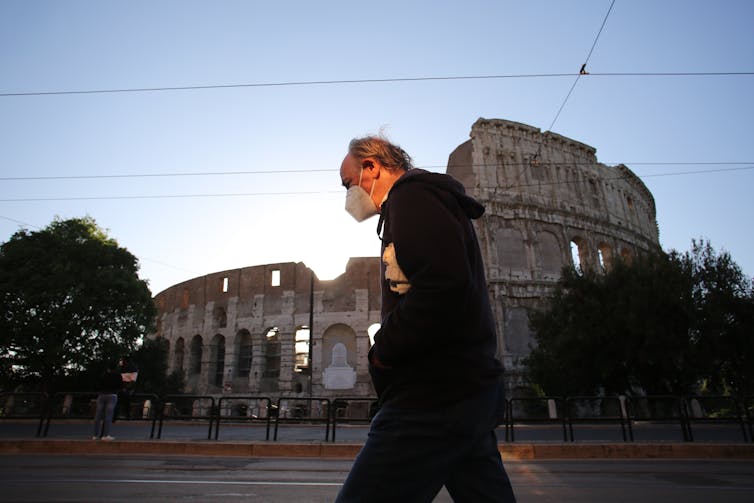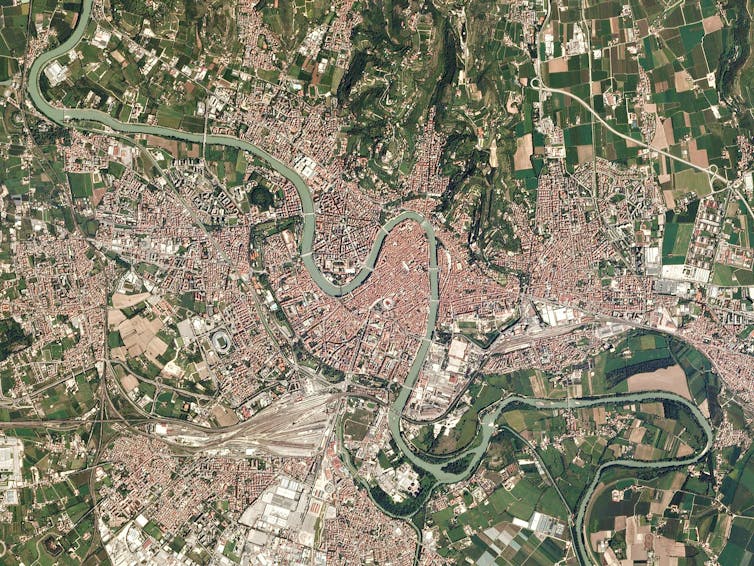During the summer of 2020, as highlighted by geographers Aurélie Delage and Max Rousseau, media across many European countries widely reported the idea that the Covid-19 pandemic had triggered a massive urban exodus.
The concept of a rural renaissance had been circulating in anti-metropolitan discourse for some time, but the Covid-19 pandemic amplified its appeal. During lockdowns and health restrictions, media outlets such as the BBC, Reuters, and Bloomberg fuelled narratives that glorified the perceived tranquillity of rural life. These romanticised depictions sparked criticism, particularly in France, where the hashtag #guillotine2020 emerged to denounce the perceived privileges of celebrities enjoying lockdown in idyllic settings. Despite this backlash, the narrative of an urban exodus continued to gain traction.
A similar trend emerged in Italy, where public discourse often gave the impression that everyone not only had the opportunity to leave cities for a second home but also the desire and means to make such a move permanent.
The pandemic as a catalyst for suburbanisation
In a recent article published in the scientific journal European Urban and Regional Studies, we sought to verify whether this media-driven rhetoric was grounded in reality.
Our study results indicate that the onset of the pandemic may have triggered new residential dynamics that persisted beyond the pandemic period. However, capturing these complex trends requires more than a single measure. To address this, we employed four distinct indicators.

We looked at Facebook users’ activity and location, as well as average rent prices, as indicators of temporary relocations. For more permanent relocation measures, we considered real estate transactions and official residence changes.
Our research revealed a notable trend: at the start of the pandemic, people began to value the advantages of living outside urban centres. This shift was evident in an increase in Facebook connections in non-urban areas, suggesting heightened social interactions in less densely populated environments. These regions also saw a sharp rise in rent prices and property sales, indicating growing interest in rural and suburban living.
However, as the pandemic progressed and more employers required employees to return to in-person work, urban centres regained their appeal. This renewed preference for city living was reflected in a decline in Facebook connections and a drop in rent prices in non-urban areas by 2022.
Despite the renewed interest in urban living, intermediate areas and the outer fringes of cities continue to draw significant attention. This trend is evident in the dynamic real estate market in municipalities outside urban centres and the population growth in peripheral areas. When choosing permanent residences, Italians showed a clear preference for suburban areas on city outskirts over remote rural locations.
In contrast, rural areas reverted to pre-pandemic trends, characterised by notable population decline. This pattern points to a shift toward suburbanisation rather than a genuine rural renaissance.
Studies in Spain, China, Italy, and Germany present similar results, suggesting that people are more attracted to suburban environments that offer a convenient balance between urban advantages and rural tranquillity. Long-term data on residential patterns also confirm this trend. The number of residents in suburban areas has increased significantly.
According to an analysis by the real estate group Tecnocasa, in 2019, 18.3% of Italians chose to buy a house on the outskirts of their city of residence, a figure that rose to 23.1% in 2023. Meanwhile, the share of people buying property directly in the city centre decreased from 74.4% in 2019 to 67.6% in 2023. These figures reflect a shift in residential preferences, indicating growing interest in suburban areas and suggesting a lasting change in housing choices.
Will the evolution of residential choices persist post-pandemic?
Historically, suburbanisation has been driven by rising housing costs in metropolitan areas and the lack of adequate local services, such as basic healthcare and community support systems. These include general practitioners, youth and family centres, libraries, markets, schools, and neighborhood stores. The pandemic appears to have amplified these trends. As housing costs climb and urban services remain inadequate, many people are seeking long-term, more affordable housing options in suburban areas.

The shift to remote work for many professionals has further fuelled this migration, offering greater flexibility in choosing where to live. This change has sparked interest in areas with cheaper housing, larger living spaces, and easier access to natural surroundings. Additionally, during the pandemic, some households relocated from overcrowded cities to reduce exposure to the virus. Successive lockdowns heightened appreciation for outdoor spaces, parks, and recreational areas, motivating many to make permanent moves.
Finally, the economic impact of the pandemic may have weakened the financial stability of some households, prompting them to seek more affordable housing outside increasingly expensive urban areas. However, empirical studies conducted in Spain and the UK have not identified a true urban exodus – defined as a mass migration from cities to remote rural areas.

However, real estate transaction data suggests a declining preference for cities compared to areas outside urban centres. It appears that, during the pandemic, some individuals were enticed to purchase property in suburban or rural locations without necessarily relocating permanently.
This trend aligns with a 2021 survey by the real estate agency Engel & Völkers, conducted across 16 European countries. The survey revealed that Italy ranked second, after Spain, in terms of intentions to buy second homes. Notably, 70% of Italian clients expressed a strong desire to prioritise such purchases, driven by a tradition of high savings and a growing emphasis on comfortable living.
Our findings pave the way for further research into how the extraordinary circumstances of the Covid-19 crisis may have encouraged individuals with sufficient means to consider property purchases outside urban hubs as an “escape strategy.” Future studies should also examine whether these pandemic-driven residential dynamics will persist over the long term and how they intersect with broader, pre-existing trends.
The original research article published on EURS was co-written with Fabio Manfredini, Viviana Giavarini, and Carmelo Di Rosa (Politecnico di Milano, DAStU).
Les auteurs ne travaillent pas, ne conseillent pas, ne possèdent pas de parts, ne reçoivent pas de fonds d'une organisation qui pourrait tirer profit de cet article, et n'ont déclaré aucune autre affiliation que leur organisme de recherche.
This article was originally published on The Conversation. Read the original article.







